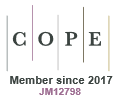Just Accepted
This article has been peer reviewed and accepted for publication. It is in production and has not been edited, so may differ from the final published form.
An integrative taxonomy of the genus Stephostethus in Taiwan, with descriptions of four new species (Coleoptera, Latridiidae)
Abstract
Latridiidae is a small family within Coleoptera, with over 800 species and 31 genera worldwide. The family is mainly fungivorous, and can be found in leaf litter, on living vegetation, dead dry branches, rotten wood, and tree bark. Some species can be found in the indoor environment and are associated with stored products. The genus Stephostethus in Taiwan was previously known to contain three species, S. chinensis (Reitter), S. chinensis Ho, Rücker & Chan, and S. yuanfengensis Ho, Rücker & Chan. Stephostethus chinensis (Reitter) is from the Palearctic, and other species are endemic to Taiwan. In this study, we revise the genus based on comparative anatomy and molecular species delimitation methods. As a result, we descriibe four new species: S. tricarinatus sp. nov., S. cornutus sp. nov., S. truncatus sp. nov., and S. longidens sp. nov. All the new species can be found in the mid-altitude area in Central Taiwan, and S. longidens sp. nov. can also be found in Southern Taiwan. The descriptions, habitus, and male terminalia of four new species are provided. The COXI and 28S sequences of S. chinensis (Reitter), S. chinensis Ho, Rücker & Chan, S. yuanfengensis Ho, Rücker & Chan, S. cornutus sp. nov. and S. truncatus sp. nov. are provided and analyzed. We conduct maximum likelihood and Bayesian inference analyses, and all species are recovered as a monophyletic group. The relationships of all species of Stephostethus in Taiwan with adjacent areas based on morphological characters are also discussed.
IS25008 Accepted 30 September 2025
© CSIRO 2025



